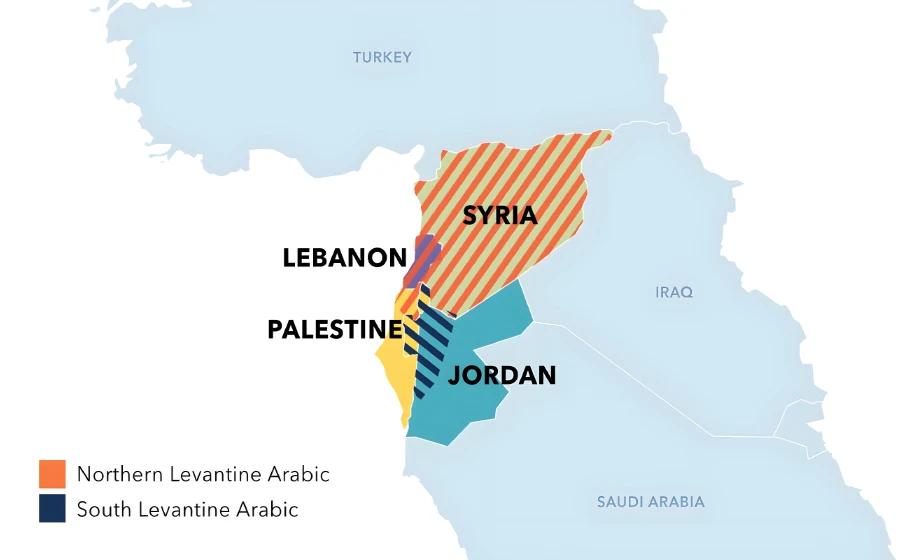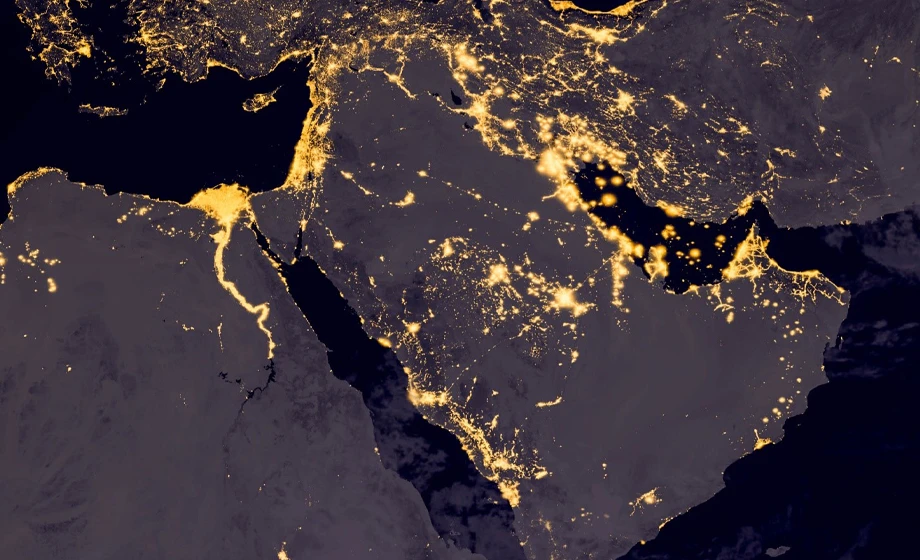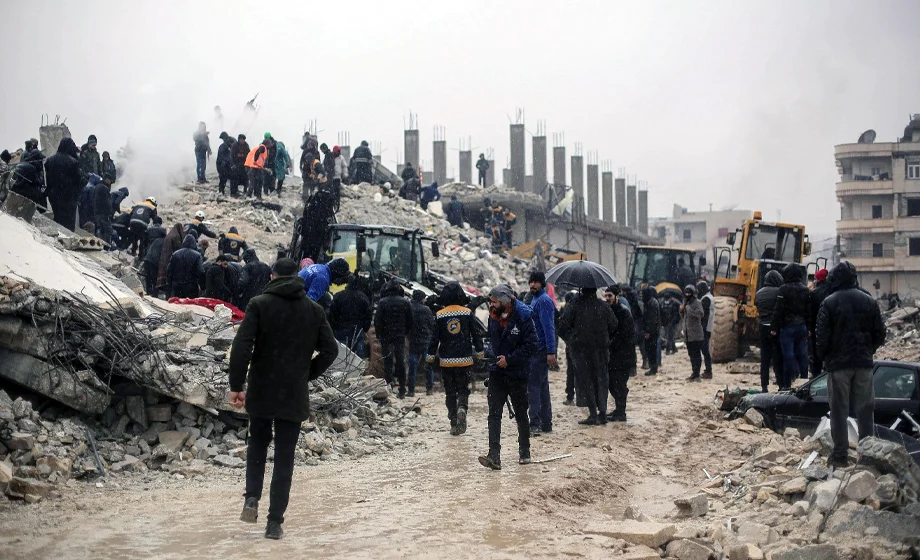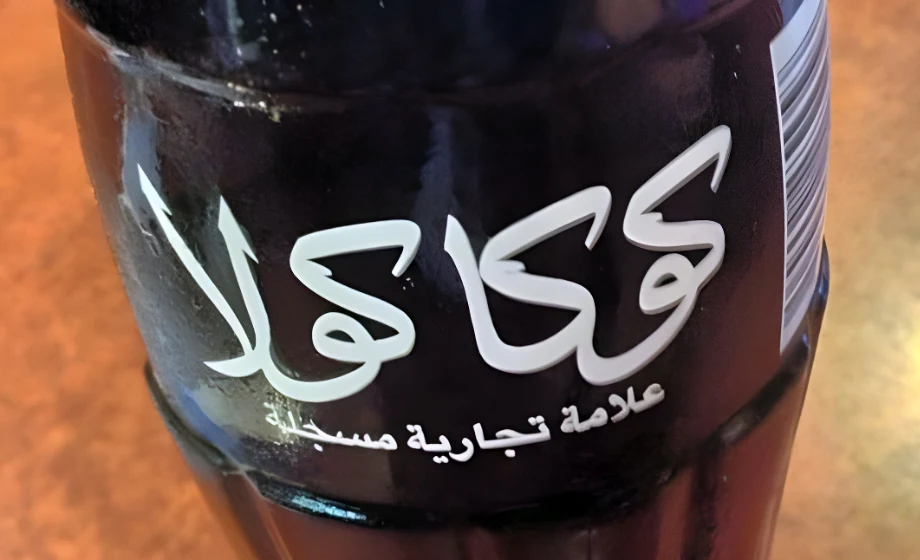This article is part of our crash course series on Arabic dialects.
If you know some Standard Arabic and want to understand how the dialects differ, our Guide to Arabic Dialects will help you get started. We’ve also published in-depth guides on Moroccan and Egyptian Arabic.
In this article, we look at one of the most widely understood dialects: Levantine Arabic.
Looking for professional Levantine Arabic translation? Head over to our quote page to get started.
The Levant refers to the area located in the Eastern Mediterranean and includes Lebanon, Palestine, Syria, and Jordan in the modern world. The term Levant entered English in the late 15th century from French. It derives from the Italian Levante, meaning “rising”, implying the rising of the sun in the East. The Arabic equivalent of the term is known as Al-Mashriq اَلْـمَـشْـرِق, meaning “the land where the sun rises”. Thanks to the region’s rich cultural and religious heritage, Levantine has become an attractive dialect for students wishing to learn Arabic and for scholars interested in the region. The large number of expatriates coming from the region’s countries also means that Levantine Arabic is spoken widely across the world.
Levantine Arabic is well understood across the Arab world and expatriates from Levant countries have helped the dialect spread throughout the world. The dialect has also gained in popularity in the last few years as the chosen language of historical dramas, television series, and dubbed Turkish soap operas.
History
Aramaic was the lingua franca of the Middle East from about the 12th century BC until the 9th century AD when the spread of Islam allowed Arabic to take its place. However, the language shift that occurred in the Levant was not a sudden replacement of one language by another but rather a gradual and lengthy process. Many scholars agree that 50 percent of the grammatical structure of Central Levantine Arabic is due to Syriac influences, a dialect of Middle Aramaic.
Robert Gabriel, Syriac professor and president of the Association of Syriac Language Friends gives the example of the sentence “ijul-uwlad,” meaning “the children came.” In this sentence, the verb “iju,” which precedes the subject “al-uwlad” is in the plural form. In classical Arabic, such a sentence would be wrong, because a verb preceding the subject remains in the singular, even with a plural subject. In Syriac, plural goes with plural, masculine goes with masculine, and feminine with feminine.1
Under Ottoman rule, the region acquired many Turkish terms such as كندرة (kundara) for shoes and بوظة (boza) for ice cream. Another example is the suffix “ji”, which is often added to words to indicate professions. The word صابونجي (sabonji) means soap (صابون) maker and the word كبابجي (kababji) means someone who makes kababs.
After the First World War and the collapse of the Ottoman Empire, the Levant region was divided between French and British rule. The cultural and linguistic exchange that followed left a mark on Levantine Arabic, especially in countries like Lebanon where French is still used in daily life and as a medium of education.
Some examples of terms borrowed from French and other Arabized French terms include saying بلكون (balcon in French) for balcony, and إشكمان for a car exhaust (échappement in French).
In countries such as Jordan and Palestine, placed under British tutelage, English had the larger linguistic influence and was the language of education in schools. Words such as جريدة (jareeda) for a newspaper (from the English word journal) and سكرتير (sekreter) for secretary are some examples.
An exchange can also be seen between Palestinian Arabic and Hebrew with some words borrowed from Hebrew to Arabic without any change (deši (grass), širutīm (toilets), eisik (business) while others are modified (the word masom, meaning roadblock, is Arabized by adding the suffix “at” when used in the plural to become masomat).
A distinction should be made between urban varieties of Levantine Arabic, which remain largely homogenous, and the rural varieties that exhibit significant changes, especially in isolated areas.
We can also distinguish sub-dialects, obvious especially in rural populations2:
- Northern Levantine Arabic, spoken in Lebanon, Northern Palestine, and Syria.
- South Levantine Arabic, is spoken in Palestine between Nazareth and Bethlehem, in the Syrian Hauran mountains, and in western Jordan.
It should be noted that Levantine Arabic not only varies from country to country and from region to region but also from village to village. As transport and population movements were relatively slow to progress in some areas, dialects were able to develop independently.
Sociological variations can also be noted with nomadic or bedouin communities speaking distinct dialects from the local sedentary (settled) communities.3 This can be seen in Jordan where Arabic dialects spoken by bedouin tribes differ from the Arabic spoken in Amman, which also differs from that spoken in some rural areas. The same applies to different religious communities (Muslims, Christians, Jews). For example, the Druze of the Hauran region in Syria speak a dialect different from that of the local Muslims (probably because migrated from Mt. Lebanon)4.
Pronunciation
As a result of these Ottoman, French, and English influences on this particular region throughout history, Levantine Arabic presents several alterations in the pronunciation of most letters, shifting towards an easier and simpler phonetic alphabet. For example, the letter ث is pronounced as ت or س, depending on the word (e.g. يوم التلاتا/ سابت). The ق is also largely pronounced as ء, except in certain rural areas of each country (e.g. ورأة/ ألب). The ذ becomes د or ز in the Levant (e.g.دنب/ لزيز) while the letter ظ is pronounced as ض or ز (e.g. ضهر/ مزلوم).
In Damascus, /i/ and /u/ have merged to /ə/ in closed syllables, but not in Jerusalem.
Jerusalem: ruḥt ‘I went’, nimt ‘I slept’
Damascus: rəḥə t ‘I went’, nəmə t ‘I slept’.5
Syria is nowadays distinguished by the use of مو instead of the مش used in the rest of the Levant. For example, ‘I am not happy’ would be ‘أنا مش مبسوط’ in Lebanon, but ‘أنا مو مبسوط’ in Syria.
Jordanian people are, on the other hand, known for pronouncing ق as G (e.g. قلبي is pronounced ‘galbi’ instead of ‘qalbi’).
Grammar
The simple present tense in Levantine Arabic is marked by the addition of the letter ب at the beginning of the verb. For example, if you want to say ‘I dance’, the Levantine equivalent would be ‘أنا برقص’.
The addition of عم or عمّال before the verb is the Levantine version of the present participle; e.g. ‘I am dancing’ is translated as ‘عم أرقص’ or ‘عمّال أرقص’.
The dual form in Arabic grammar known as the muthanna form is one of the key challenges of learning Standard Arabic. Contrary to other languages, a couple (of people, animals or objects) is not referred to in the same way as a group of 3+ elements; e.g. ولدٌ/ ولدان/ أولاد. Luckily, this form was eliminated in spoken Levantine Arabic to facilitate communication; e.g. ‘كمال ومريم عم يرقصوا’, as opposed to ‘كمال ومريم يرقصان’ in Modern Standard Arabic.
Standard Arabic also distinguishes between the feminine plural and masculine plural forms, e.g. الرجال يرقصون/ النساء يرقصْنَ. Levantine speakers also eliminated this distinction to further facilitate the use of Arabic in their daily lives; e.g. ‘دانا ومريم وليلى عم يلعبوا بالدّار’, as opposed to ‘دانا ومريم وليلى يلعبْنَ في الدّار’ in Modern Standard Arabic.
Another trait of Levantine Arabic is the use of the pronoun هنّ, originally used in Modern Standard Arabic to refer to feminine plurals, as an equivalent for ‘They’ for both genders; e.g. هنّ عمّال يدرسوا.
List of Keywords
| English | Levantine Arabic |
|---|---|
| Hello (or standard greeting) | مرحبا / أهلين |
| Good morning | صباح الخير / صباحو |
| Good evening | مسا الخير |
| Good night (when leaving) | تصبح على خير / مع السلامي / سلام |
| Excuse me | عن إزنك / عفوًا / لو سمحت |
| I’m sorry | بعتزر / لا تواخزني |
| Sorry, don’t worry about it | ولا يهمّك |
| Thank you | شكرًا / يسلمو |
| You’re welcome | تكرم / أهلا وسهلا / أهلين وسهلين |
| Who? | مين؟ |
| What? | شو؟ / إشو؟ |
| Where? | وين؟ |
| When? | إيمت؟ / إيمتى؟ |
| Why? | ليش؟ |
| How? | كيف؟ / شلون؟ |
| How are you? | كيفك؟ / شلونك؟ |
| Present | بـ |
| Future | لح / حا / رح / بدي |
| Negation (verbal) | ما / لأ |
| Negation (predicate) (i.e. isn’t) | مش / مو |



